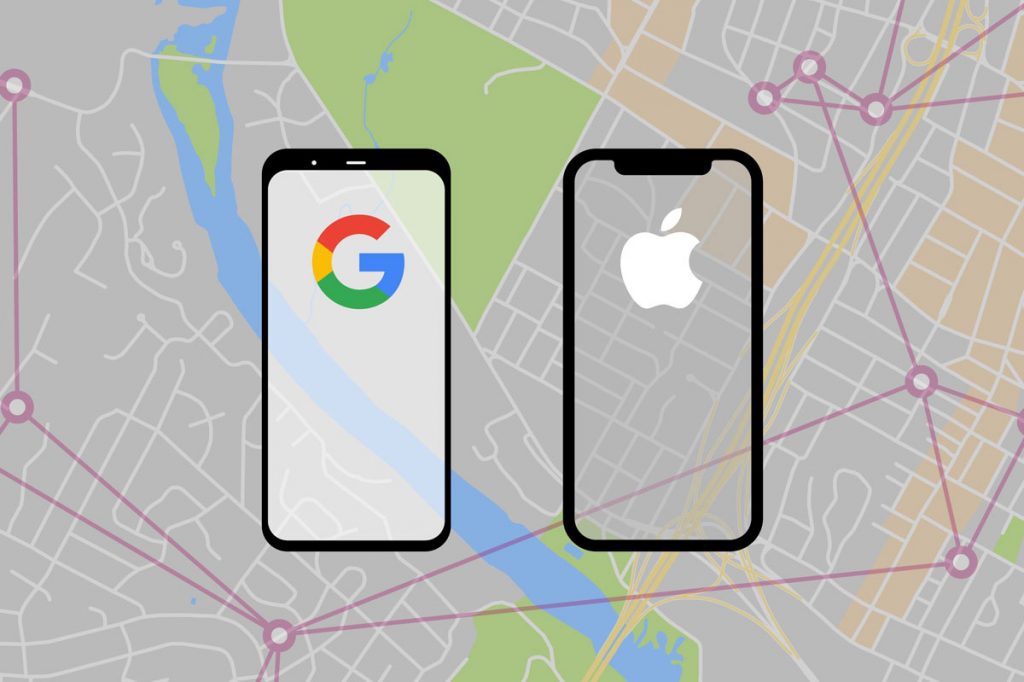Technology
GOOGLE AND APPLE TEAM UP TO SUPPORT CONTACT TRACING
(EXERPS FROM WIRED)
On Friday, April 10, the two companies announced a rare joint project to create the groundwork for Bluetooth-based contact-tracing apps that can work across both iOS a
nd Android phones. In mid-May, they plan to release an application programming interface that apps from public health organizations can tap into. The API will let those apps use a phone’s Bluetooth radios—which have a range of about 30 feet—to keep track of whether a smartphone’s owner has come into contact with someone who later turns out to have been infected with Covid-19. Once alerted, that user can then self-isolate or get tested themselves.
Crucially, Google and Apple say the system won’t involve tracking user locations or even collecting any identifying data that would be stored on a server.
Unlike Apple, which has complete control over its software and hardware and can push system-wide changes with relative ease, Google faces a fragmented Android ecosystem. The company will still make the framework available to all devices running Android 6.0 or higher by delivering the update through Google Play Services, which does not require hardware partners to sign off.
The app will be interoperable between the two dominant smartphone platforms.
In the version of the system set to roll out next month, the operating-system-level Bluetooth tracing would allow users to opt into a Bluetooth-based proximity-detection scheme when they download a contact-tracing app. Their phone would then constantly ping out Bluetooth signals to others nearby while also listening for communications from nearby phones.
If two phones spend more than a few minutes within range of one another, they would each record contact with the other phone, exchanging unique, rotating identifier “beacon” numbers that are based on keys stored on each device. Public heath app developers would be able to “tune” both the proximity and the amount of time necessary to qualify as a contact based on current information about how Covid-19 spreads.
If a user is later diagnosed with Covid-19, they would alert their app with a tap. The app would then upload their last two weeks of keys to a server, which would then generate their recent “beacon” numbers and send them out to other phones in the system. If someone else’s phone finds that one of these beacon numbers matches one stored on their phone, they would be notified that they’ve been in contact with a potentially infected person and given information about how to help prevent further spread.
In a second iteration of the system rolling out in June, Apple and Google say they’ll allow users to enable Bluetooth-based contact-tracing even without an app installed, building the system into the operating systems themselves. This would be opt-in as well. But while the phones would exchange “beacon” numbers via Bluetooth, users would still need to download a contact-tracing app to either declare themselves as Covid-19 positive or to learn if someone they’ve come into contact with was diagnosed.
______________________
Process Reengineering
The question arises, how do you look at a job, with all its parts and complexity, and try to make it less location dependent? A very straight forward way to do this is through process re-engineering.
What does that mean? You start by thinking about your job. You know that your job involves a number of different functions, that is, different things that you are assigned to accomplish. OK, create a list of the different functions and rank them by priority.
Now, focus on the most important function that you perform. (And after that, the next, and the next.) Functions are about what you are trying to accomplish.
Now we want to focus on how you are trying to do that work. The how we work is a process, and in most cases, a set of processes. The processes are interconnected. You can actually flow chart the different processes.
Let’s suppose you have five interconnected processes to complete the function. Your immediate goal is to make the function less location dependent. A secondary goal is to perform the function while staying away from people. A third goal, while you are at it, is looking for ways to make the function more efficient.
So, let’s return to the list of five processes. It is time to ask:
- Are all of these processes even necessary? Can we eliminate a process that is location dependent by changing how we do the work in other areas, and make the function less location dependent?
- Can we redefine the process – change how we do it – and make it less location dependent while still accomplishing that which was essential?
- Can we use technology to make the process location independent?
- What about the function itself? What’s the operative paradigm behind that function? We don’t necessarily want to squeeze our existing work paradigm into a location independent model. We may also want to look at the paradigm, look at what we are doing, and ask why do we do that?
- Can we contract with someone else to perform the process, and remove the process from our location?
- What are the principles that drive how we do things? Do these principles make sense in an environment constrained by the coronavirus? Maybe we need to temporarily change a principle or a rule, perhaps even one we consider sacred?
This is the secret: many of the processes we use to perform our work functions have not been put under a microscope for years, and sometimes even decades. Just asking the question reveals obvious changes. Generally, if you lay the work processes out on a chart, really look at them and spend a little time asking if there is another way to do this, you will find improvements without compromise.

